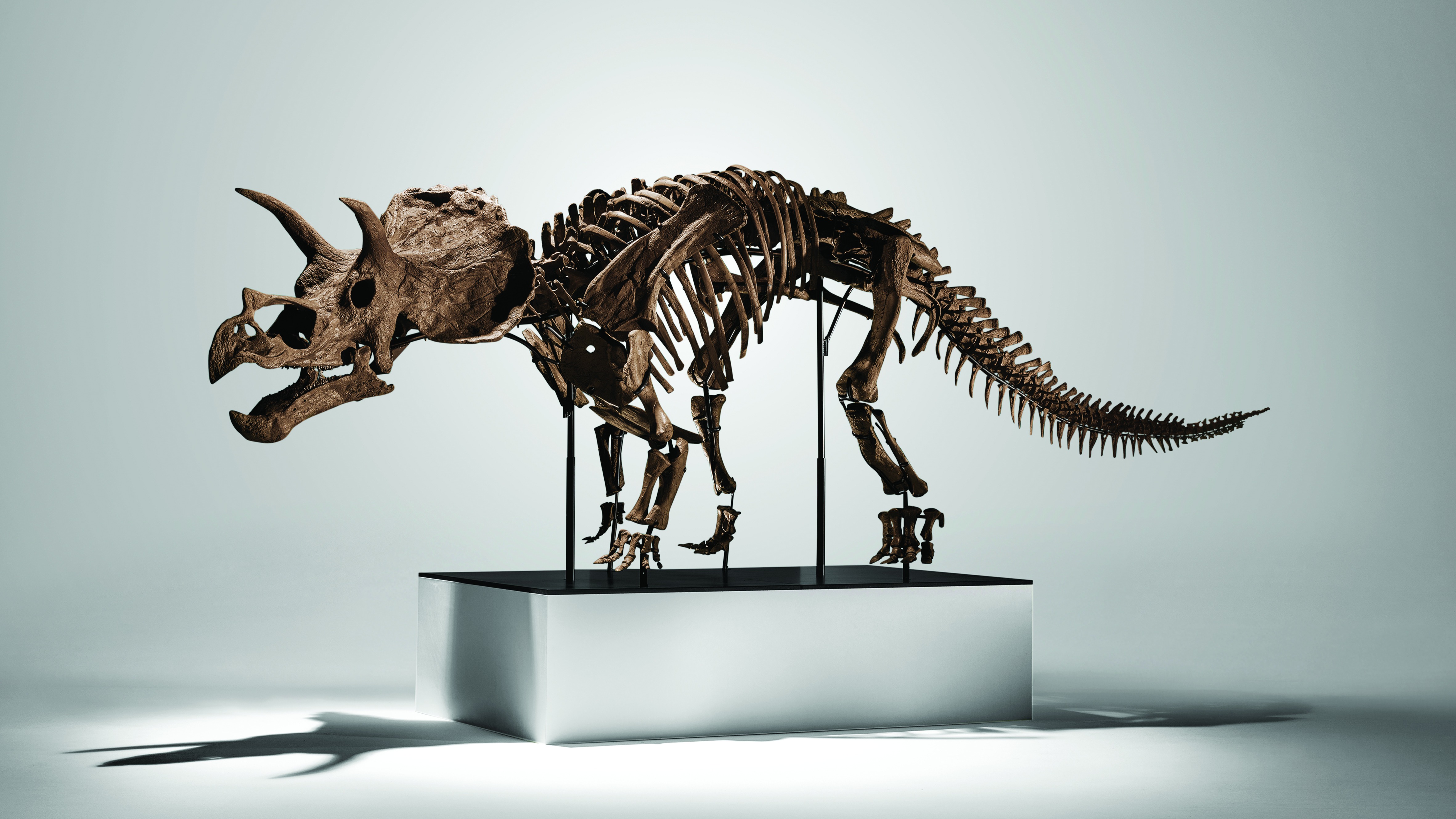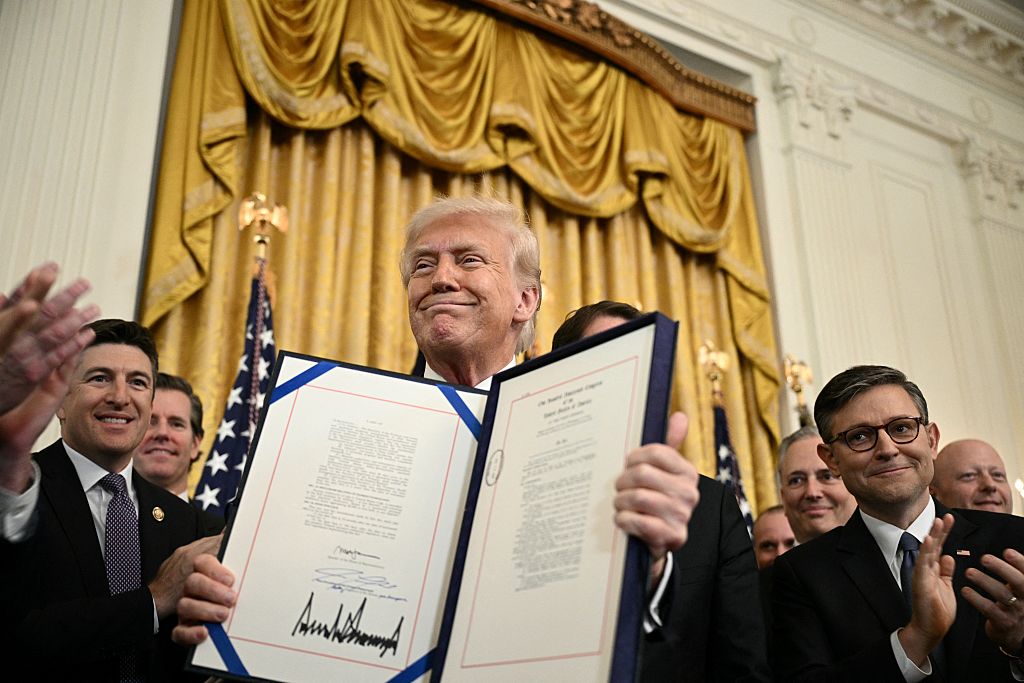How dinosaur fossils became collectables for the mega-rich
Dinosaur fossils are prized like blue-chip artworks and are even accelerating past the prices of many Old Masters paintings, says Chris Carter


Last week, the fossilised bones of a stegosaurus and an adult and juvenile allosaurus were seized under the Proceeds of Crime Act, alongside nine luxury flats in London and a collection of Chinese artworks. The forfeiture relates to an ongoing investigation into alleged money-laundering by Su Binghai, a Singapore-based businessman. That dinosaur fossils are listed among the seized assets, along with property and art, shouldn’t surprise us, says David Brown in The Times. “Dinosaur skeletons and bones have become the status item of choice for the mega-rich in recent times, with ancient fossilised remains accelerating past the prices of many Old Masters paintings.” The fossils had sold for a combined £12.4 million, including the buyer’s premium, in London last December at auction with Christie’s.
There’s “something powerful about the visual dialogue between an awe-inspiring 66-million-year-old lot and seminal works from the modern and contemporary eras”, says Miety Heiden, head of private sales at Phillips. The auction house is offering a complete skeleton of a juvenile Triceratops as the highlight of its “Out of This World” sale in New York on 19 November. “Cera”, as the triceratops has been named, is expected to fetch between $2.5 /million and $3.5 million. “Today’s collectors want to spice things up,” Christian D. Link, a Swiss expert who has partnered with Phillips, tells The Times. “They’re like the collectors of the Renaissance who liked to surround themselves with amazing things in their ‘chambers of wonders’.” That, says Link, explains the rise in prices. In 2020, a 67-million-year-old T. rex, called “Stan”, sold for $31.8 million, a record-high auction price until July 2024, when billionaire investor Ken Griffin paid $44.6 million for a 150-million-year-old stegosaurus, called “Apex”.
The problem with buying dinosaur fossils
Apex is now on display at the American Museum of Natural History. But loans don’t always solve the problem of scientific access. “Access to dinosaurs on loan… could be taken away at any point, meaning it would be impossible to verify any conclusions made using them,” Professor Richard Butler tells James Ashworth on the Natural History Museum blog. So, some palaeontologists prefer to simply ignore them.
MoneyWeek
Subscribe to MoneyWeek today and get your first six magazine issues absolutely FREE

Sign up to Money Morning
Don't miss the latest investment and personal finances news, market analysis, plus money-saving tips with our free twice-daily newsletter
Don't miss the latest investment and personal finances news, market analysis, plus money-saving tips with our free twice-daily newsletter
The arguments for and against commercial sales of fossils are many – and not all palaeontologists call for a blanket ban. But private ownership can also make it hard for scientists to know how many of a particular kind of fossil exists – say, that of a specific creature, and that can make tracking “variation” tricky. “Spike”, a 68-million-year-old caenagnathid dinosaur skeleton, for instance, has a mark that suggests it was feathered. It is for sale with Christie’s in London on 11 December, when it is expected to fetch between £3 million and £5 million.
This article was first published in MoneyWeek's magazine. Enjoy exclusive early access to news, opinion and analysis from our team of financial experts with a MoneyWeek subscription.
Get the latest financial news, insights and expert analysis from our award-winning MoneyWeek team, to help you understand what really matters when it comes to your finances.

-
 Boost for over 100,000 families on Child Benefit as new HMRC payment system rolled out
Boost for over 100,000 families on Child Benefit as new HMRC payment system rolled outThousands of households will no longer have to pay the dreaded High Income Child Benefit Charge through self-assessment
-
 Are you being haunted by the ghost of Christmas past? How festive cutbacks could boost your long-term wealth
Are you being haunted by the ghost of Christmas past? How festive cutbacks could boost your long-term wealthThe average family spends around £1,000 over the Christmas season. Here’s how much you could have gained if you had invested some of the money instead.
-
 Stock markets have a mountain to climb: opt for resilience, growth and value
Stock markets have a mountain to climb: opt for resilience, growth and valueOpinion Julian Wheeler, partner and US equity specialist, Shard Capital, highlights three US stocks where he would put his money
-
 The steady rise of stablecoins
The steady rise of stablecoinsInnovations in cryptocurrency have created stablecoins, a new form of money. Trump is an enthusiastic supporter, but its benefits are not yet clear
-
 SRT Marine Systems: A leader in marine technology
SRT Marine Systems: A leader in marine technologySRT Marine Systems is thriving and has a bulging order book, says Dr Michael Tubbs
-
 Goodwin: A superlative British manufacturer to buy now
Goodwin: A superlative British manufacturer to buy nowVeteran engineering group Goodwin has created a new profit engine. But following its tremendous run, can investors still afford the shares?
-
 A change in leadership: Is US stock market exceptionalism over?
A change in leadership: Is US stock market exceptionalism over?US stocks trailed the rest of the world in 2025. Is this a sign that a long-overdue shift is underway?
-
 A reckoning is coming for unnecessary investment trusts
A reckoning is coming for unnecessary investment trustsInvestment trusts that don’t use their structural advantages will find it increasingly hard to survive, says Rupert Hargreaves
-
 Metals and AI power emerging markets
Metals and AI power emerging marketsThis year’s big emerging market winners have tended to offer exposure to one of 2025’s two winning trends – AI-focused tech and the global metals rally
-
 8 of the best houses for sale with beautiful fireplaces
8 of the best houses for sale with beautiful fireplacesThe best houses for sale with beautiful fireplaces – from a 15th-century cottage in Kent to a 17th-century palazzo in Oxfordshire